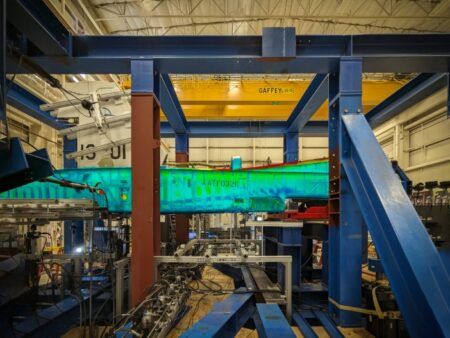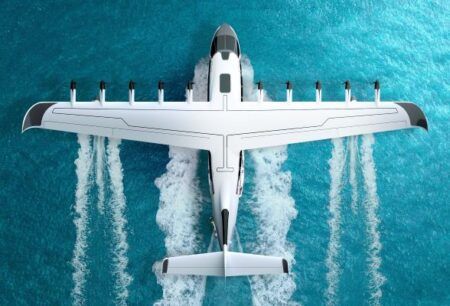The steady flight of kestrels could inform future drone designs and flight control strategies, a joint study by Australia’s Royal Melbourne Institute of Technology and Bristol University has found.
The study conducted in Royal Melbourne Institute of Technology’s (RMIT’s) Industrial Wind Tunnel facility is the first to precisely measure the stability of a Nankeen Kestrel’s head during hovering flight, and found movement of less than 5mm when the bird was exhibiting hunting behavior. The team’s findings have been published in the Journal of Experimental Biology.
“Typically, aircraft use flap movements for stabilization to achieve stability during flight,” RMIT lead researcher Dr Abdulghani Mohamed said. “Our results acquired over several years, show birds of prey rely more on changes in surface area, which is crucial as it may be a more efficient way of achieving stable flight in fixed wing aircraft too.”
Using camera and motion capture technology, the research team observed two Nankeen Kestrels, trained by Leigh Valley Hawk and Owl Sanctuary, at high resolution. Fitted with reflective markers, the birds’ precise movements and flight control techniques during non-flapping flight were tracked in detail.
“Previous studies involved birds casually flying through turbulence and gusts within wind tunnels. In our study we tracked a wind hovering flight behavior where the birds are actively maintaining extreme steadiness, enabling us to study the pure control response without flapping,” said Dr Mohamed.
By mapping these movements, the researchers gained insights that could be used to achieve steadier flight for fixed-wing aircraft.
“The wind hovering behaviour we observed in kestrels is the closest representation in the avian world to fixed wing aircraft,” said Dr Mohamed. “Our findings surrounding the changes in wing surface area could be applied to the design of morphing wings in drones, enhancing their stability and making them safer in adverse weather.”
Dr Shane Windsor, associate professor of bio-inspired aerodynamics at Bristol University and joint author of the study, said the usefulness of current fixed-wing unmanned aerial vehicles (UAVs) was significantly decreased by their inability to operate in operate in gusty wind conditions.
“UAVs are being used in the UK to deliver post to remote islands, but their operation time is limited because of regular gusty conditions. Current commercial fixed-wing aircraft must be designed with one fixed geometry and optimized to operate at one flight condition.”
“The advantage of morphing wings is that they could be continually optimized throughout a flight for a variety of conditions, making the aircraft much more maneuverable and efficient.”
The team will next examine the birds under gusty and turbulent conditions, which would see further learnings in stable flight with the goal of allowing UAVs to operate more safely and more often. Looking further ahead, the team hopes to simplify the data collected so that it can be adapted for larger scale aircraft.




